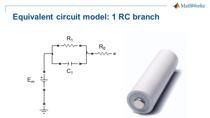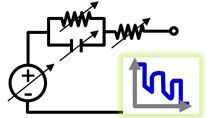Battery Modeling
From the series: Hybrid Electric Vehicles
Learn about the latest tools for battery system modeling and simulation. Start with creating a single battery cell model using the new Battery Equivalent Circuit block, build a battery pack that includes thermal management, and see a new and efficient method for battery parameter estimation that finds equivalent circuit lookup tables using multiple characterization experiments simultaneously.
Published: 4 Jun 2024






